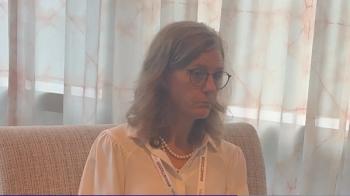
- Oncology Vol 28 No 4_Suppl_1
- Volume 28
- Issue 4_Suppl_1
(S046) Changes in Brachytherapy-Based APBI Patient Selection in the Period Immediately Before and After Publication of the ASTRO Consensus Statement
The goal of this study is to use a national database to examine how practice patterns changed prior to versus after publication of the ASTRO accelerated partial breast irradiation guideline.
Zain A. Husain, MD, Shane Lloyd, MD, Chirag Shah, MD, Lynn D. Wilson, MD, MPH, FASTRO, Usama Mahmood, MD; Yale School of Medicine; Summa Health System; UT MD Anderson Cancer Center
Introduction: The past decade has seen a surge of interest in accelerated partial breast irradiation (APBI), which offers the potential advantages of a shorter treatment duration and a decrease in the volume of normal tissue irradiated in comparison with traditional whole-breast irradiation. In July 2009, the American Society for Radiation Oncology (ASTRO) released a consensus statement (CS) to aid in optimal patient selection for APBI. The goal of this study is to use a national database to examine how practice patterns changed prior to versus after publication of the guideline.
Methods: The Surveillance, Epidemiology, and End Results (SEER) program database was queried from 2008–2010 to identify females aged ≥ 20 years receiving breast conservation therapy (BCT). Available data, including age, tumor size, lymph nodes examined, lymph nodes positive, T stage, and presence of EIC (extensive intraductal component), were used to stratify patients into “suitable,” “cautionary,” and “unsuitable” groups based on the ASTRO CS. Among the BCT patients, a cohort receiving brachytherapy-based APBI was identified. Patient characteristics and ASTRO consensus groupings for this cohort were analyzed for the 18 months (January 2008 to June 2009) prior to and after (July 2009 to December 2010) publication of the guideline. Comparisons were analyzed with a two-sample Z-test for proportions.
Results: A total of 87,528 patients undergoing breast conservation therapy were identified. Of this total, 4,253 patients (4.9%) received APBI using brachytherapy. The percentage of BCT patients receiving APBI did not change after guideline publication (4.9% vs 4.8%; P = .361). The analysis was then limited to patients who were not missing data that would affect their ASTRO CS classification, rendering 3,828 patients. Among patients receiving APBI, the proportion categorized as “unsuitable” decreased after guideline publication (15.8% vs 11.1%; P < .001), and the proportion categorized as suitable increased after guideline publication (37.7% vs 42.1%; P = .005), while the proportion categorized as cautionary did not change (46.5% vs 46.7%; P = .859). The proportion treated for cautionary or unsuitable disease went from 62.3% prior to guideline publication to 57.9% following publication (P = .005). Significant decreases were seen in the number of patients receiving APBI aged younger than 50 years (2.5% vs 1.7%; P < .001), without nodal evaluation (4.7% vs 3.4%; P = .036), and with estrogen receptor-negative tumors (10.4% vs 8.2%; P = .022) after publication of the guidelines. Additionally, there was a trend toward a decrease in the proportion of patients with node-positive tumors receiving APBI (2.5% vs 1.7%; P = .086). There was no significant change in the percentage of APBI patients treated for DCIS (16.4% vs 16.7%; P = .80).
Conclusions: In the period directly following the publication of the ASTRO CS, the proportion of “unsuitable” patients treated with brachytherapy-based APBI decreased, and the proportion of “suitable” patients increased. Nonetheless, nearly 60% of patients treated would be considered cautionary or unsuitable.
Proceedings of the 96th Annual Meeting of the American Radium Society -
Articles in this issue
Newsletter
Stay up to date on recent advances in the multidisciplinary approach to cancer.



















































































